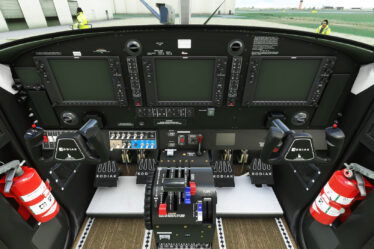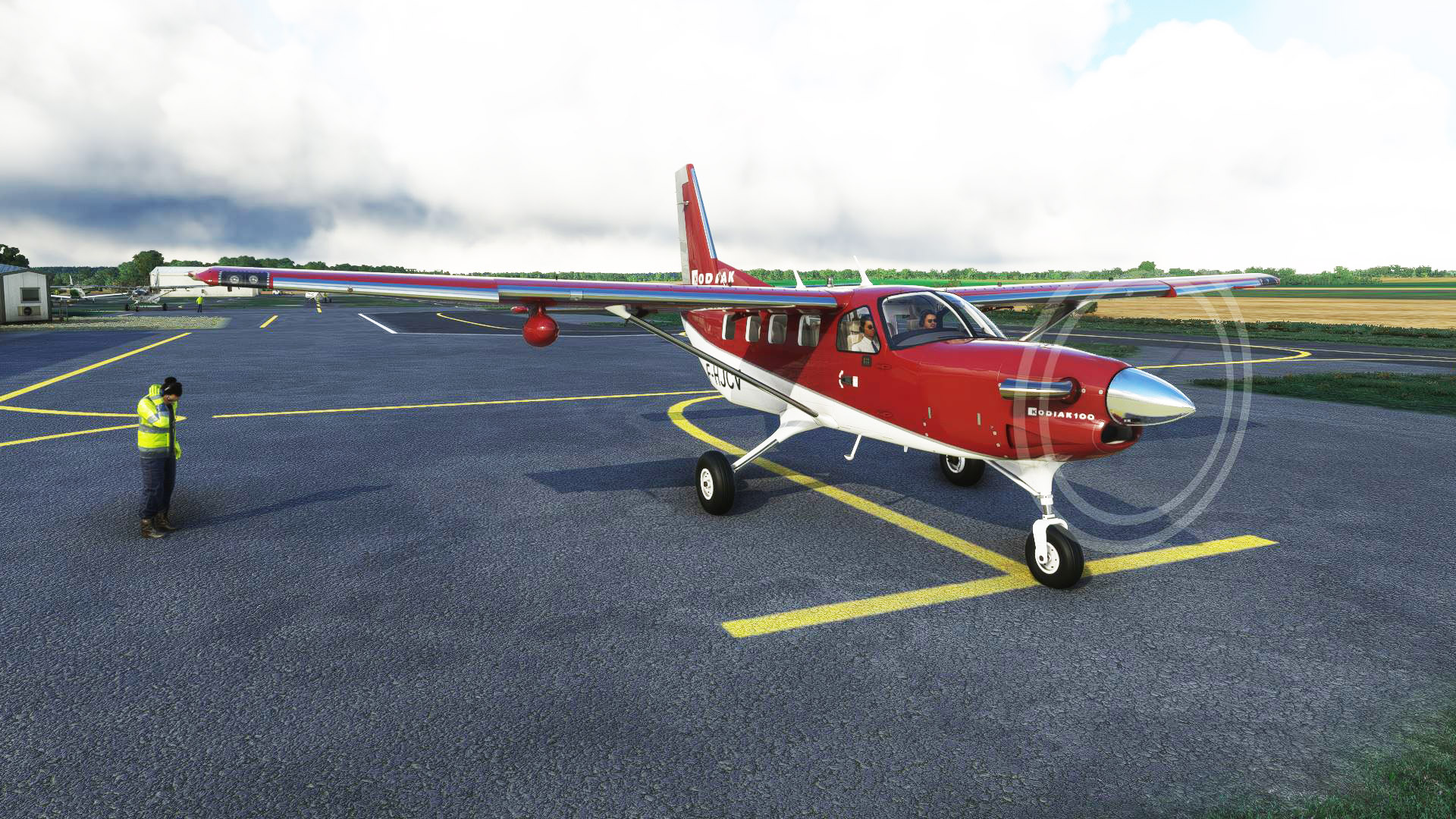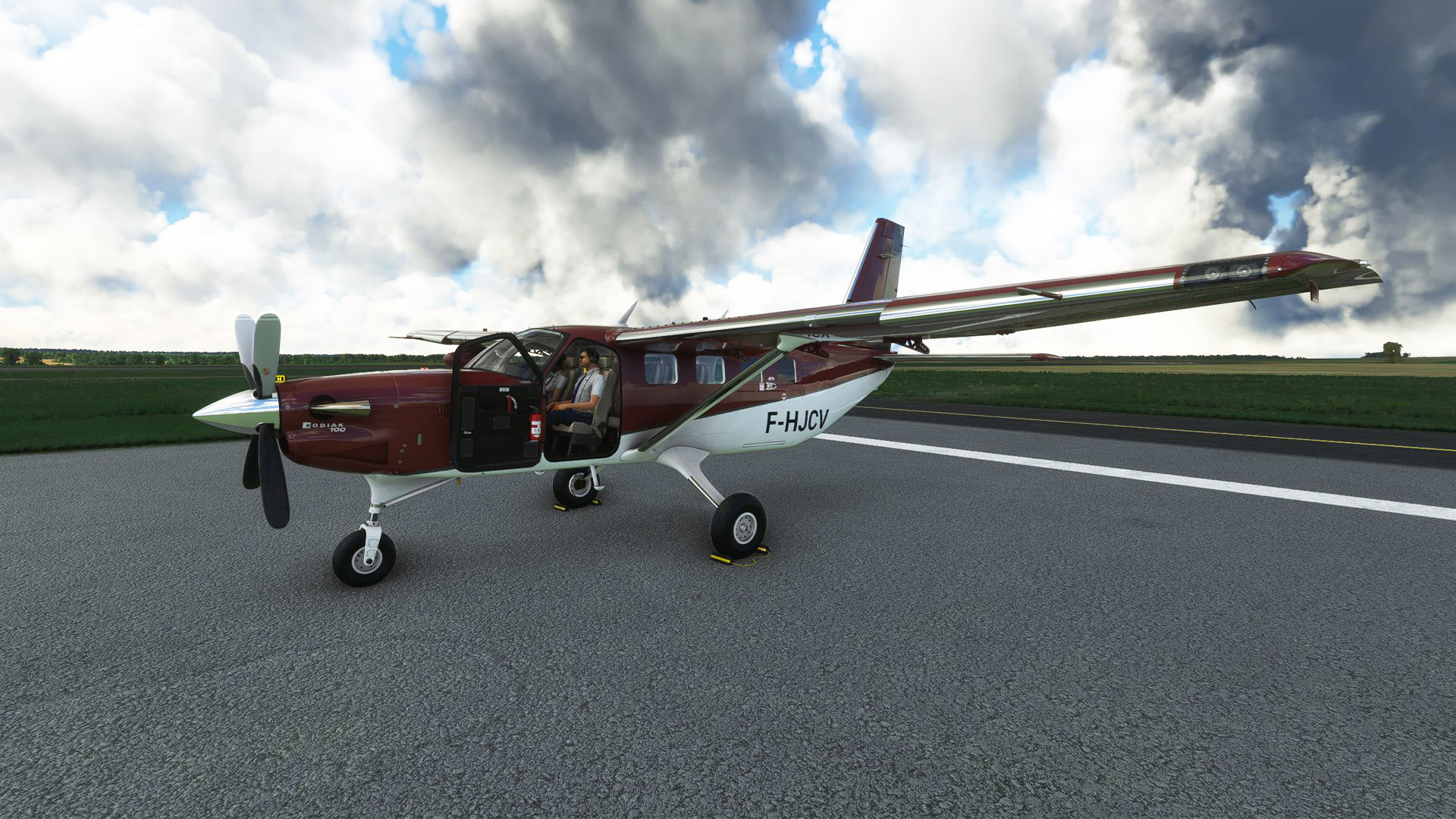
We are now at the first stage of the first phase of the training programme to tame the Kodiak 100.
We are finally going to be able to get to know this aircraft with which we will spend many hours over the coming months.
On board
In addition to the easy access through the large doors, the simplicity of the cockpit design is immediately striking.
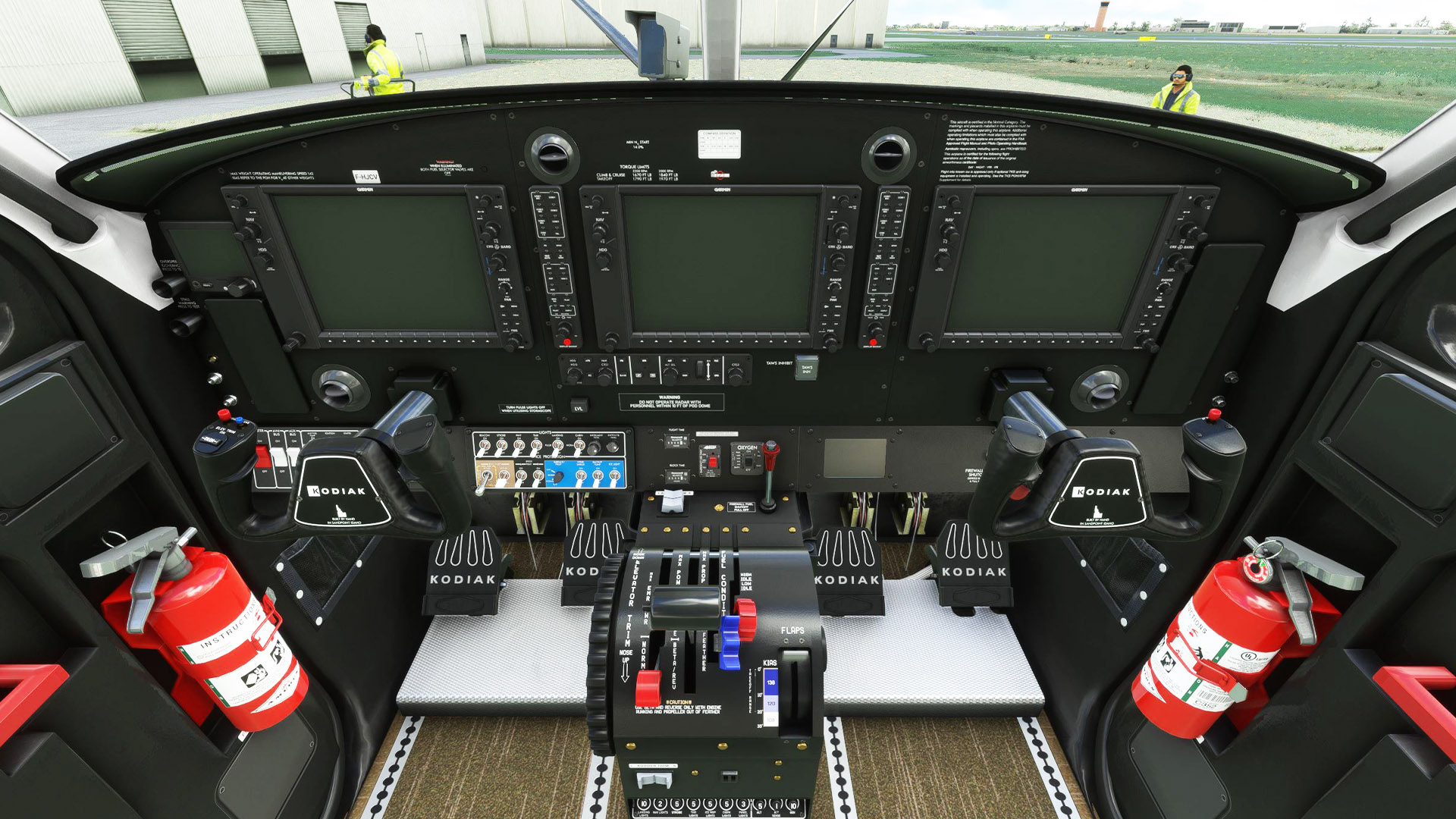
Everything is done to simplify the life of the pilot(s). No buttons all over the place. Just the necessary, assembled in logical sub-assemblies. That said, it’s obvious that using the Garmin 1000 NXi makes things easier, as a lot of informations and functionality is built in.
Aircraft management
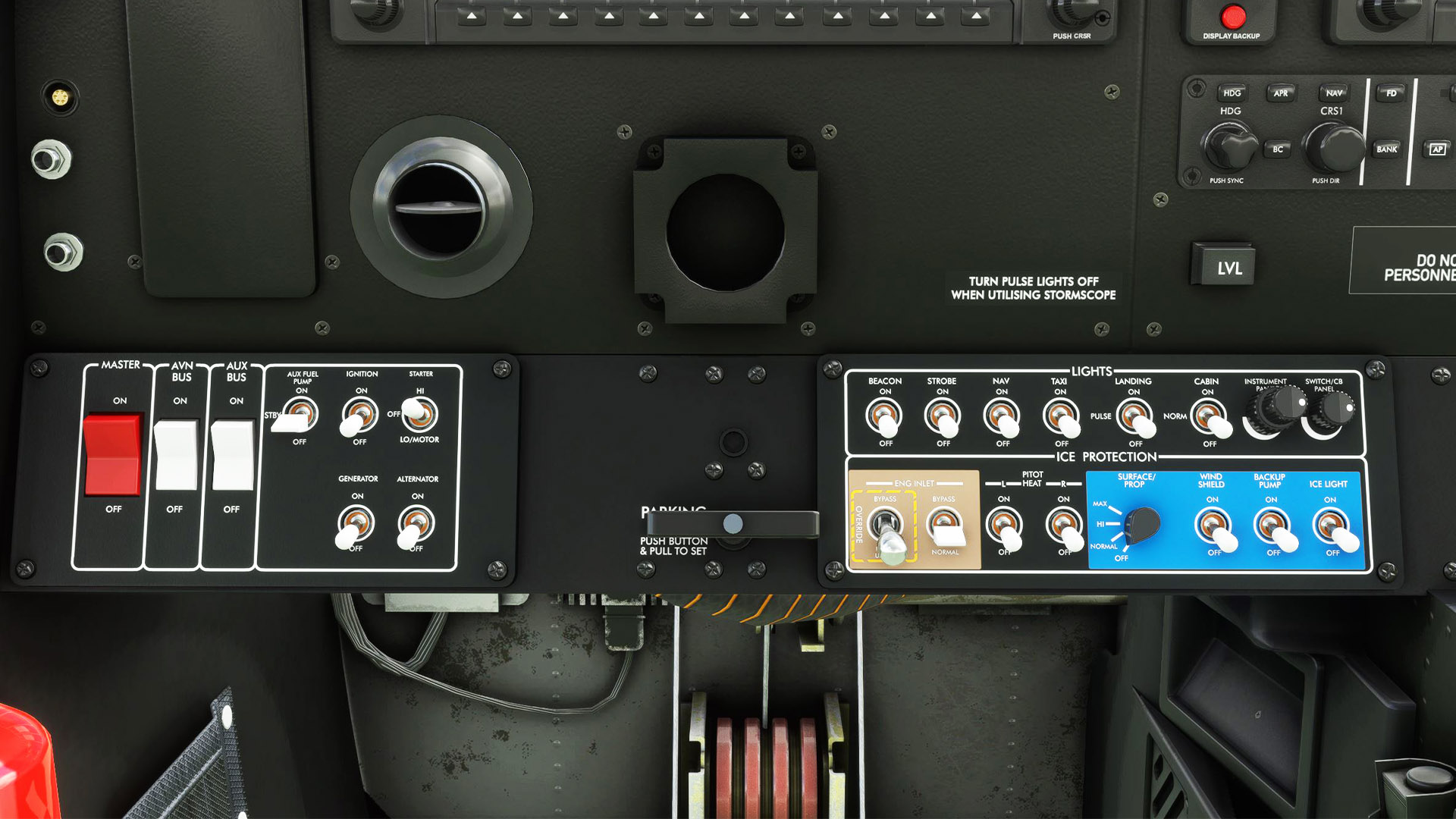
Below the screens, there is a first group of buttons (on the left of thepicture) which are linked to the aircraft’s power-up and turbine start-up phases.
The other group (on the right of the picture) contains the buttons for the various aircraft lights (interior and exterior), and the de-icing functions.
Pedestal
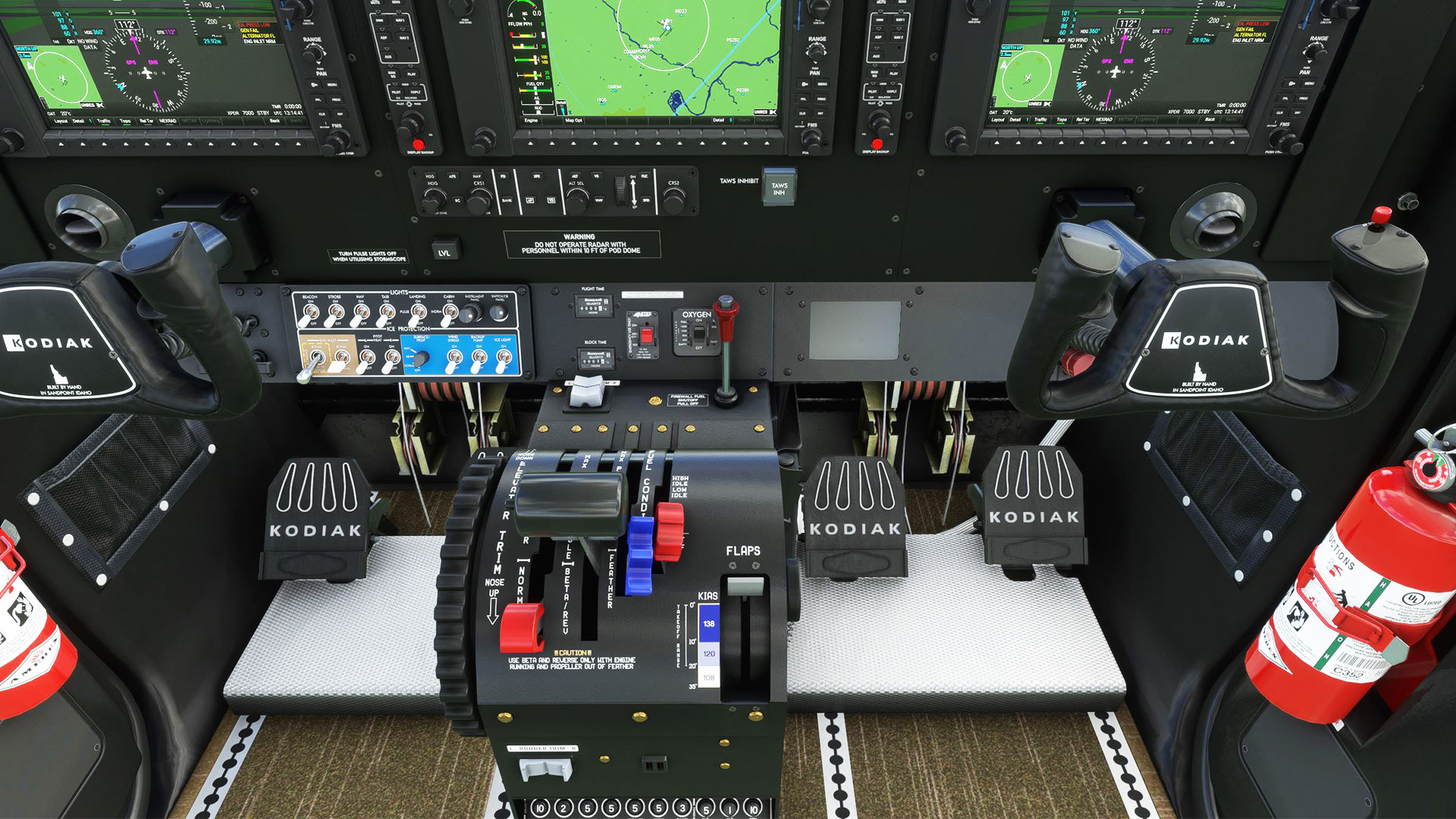
On the pedestal is the throttle lever, with a reverse function. The blue lever, in accordance with the colour code, is used to adjust the pitch of the propeller. The red lever, also colour-coded, is used to control the fuel supply.
There is also the flap management rocker, with three positions.
On the left of the pedestal is the elevator trim control. On the vertical plane, the light grey knob is used to adjust the yaw trim. The roll trim is located at the foot of the instrument panel (the second (double) light grey button in the photo).
Overhead panel
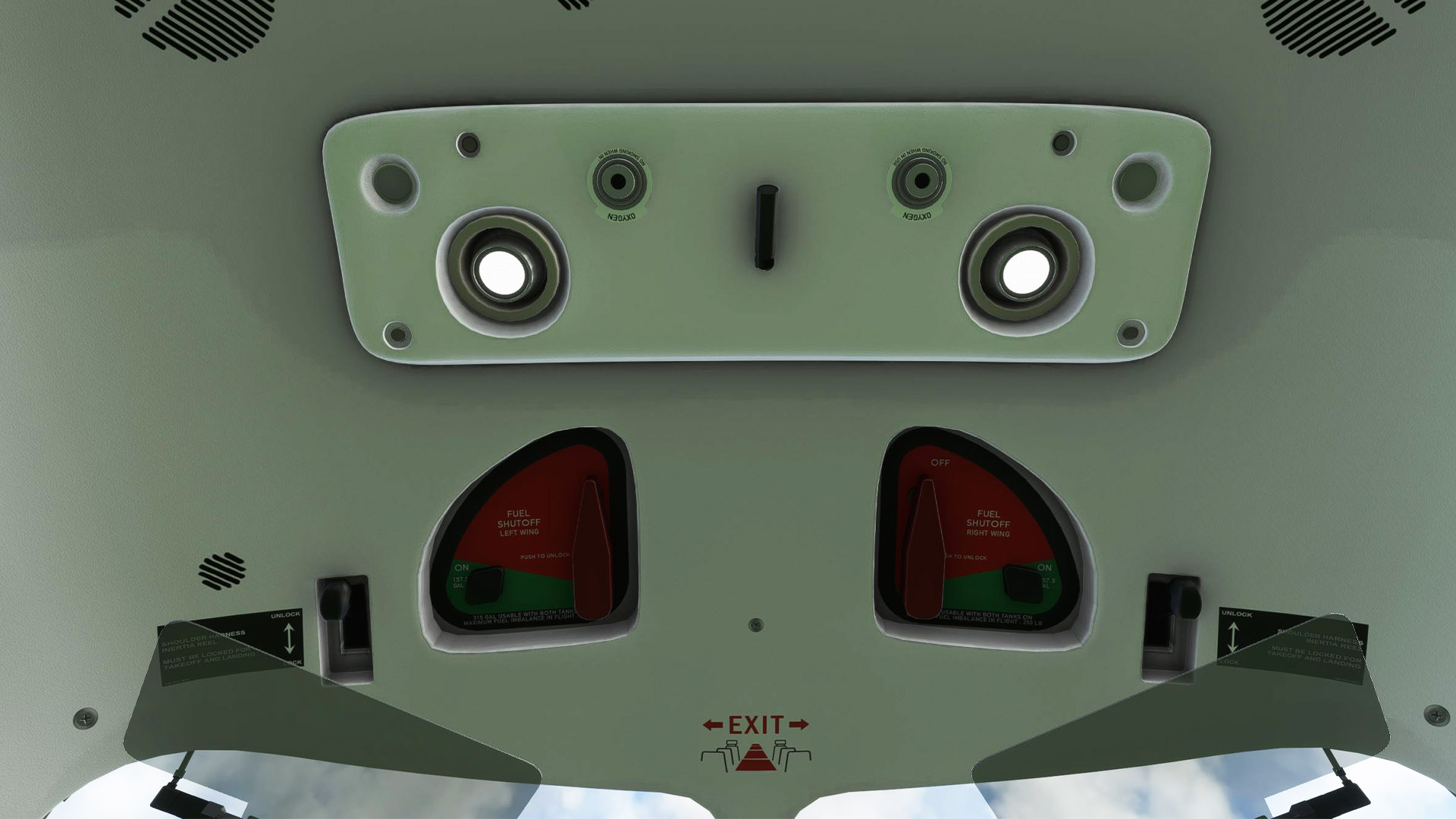
Looking up, there are fuel tank valves and a pilot harness locking system. This function is activated during take-off and landing.
Fuses
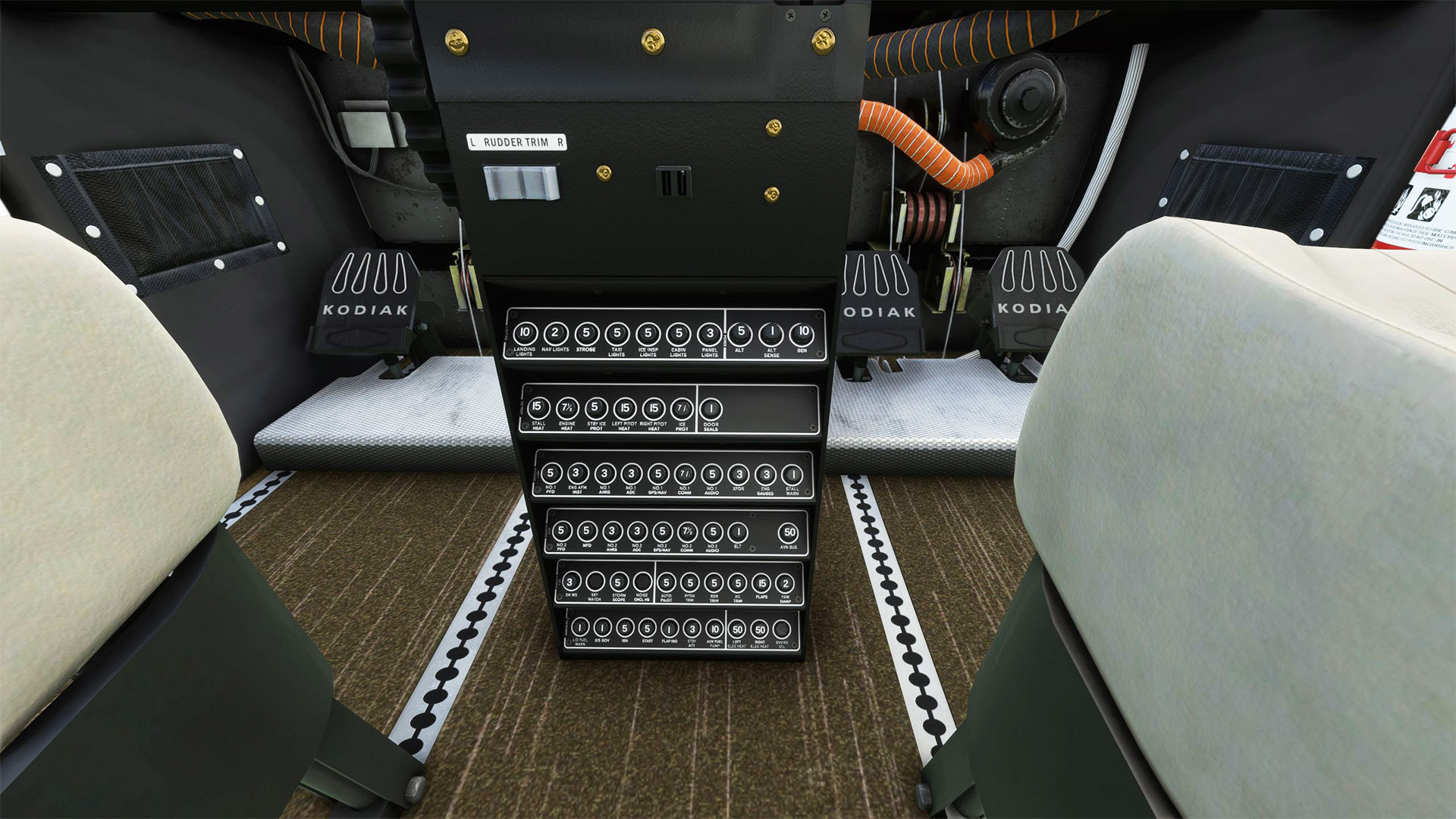
On the vertical plane of the pedestal are all the fuses protecting the aircraft’s electrical circuits. Thus placed, they are easily accessible by the pilot(s), either for the initial check or in case of failure(s).
Oxygen and air conditioning
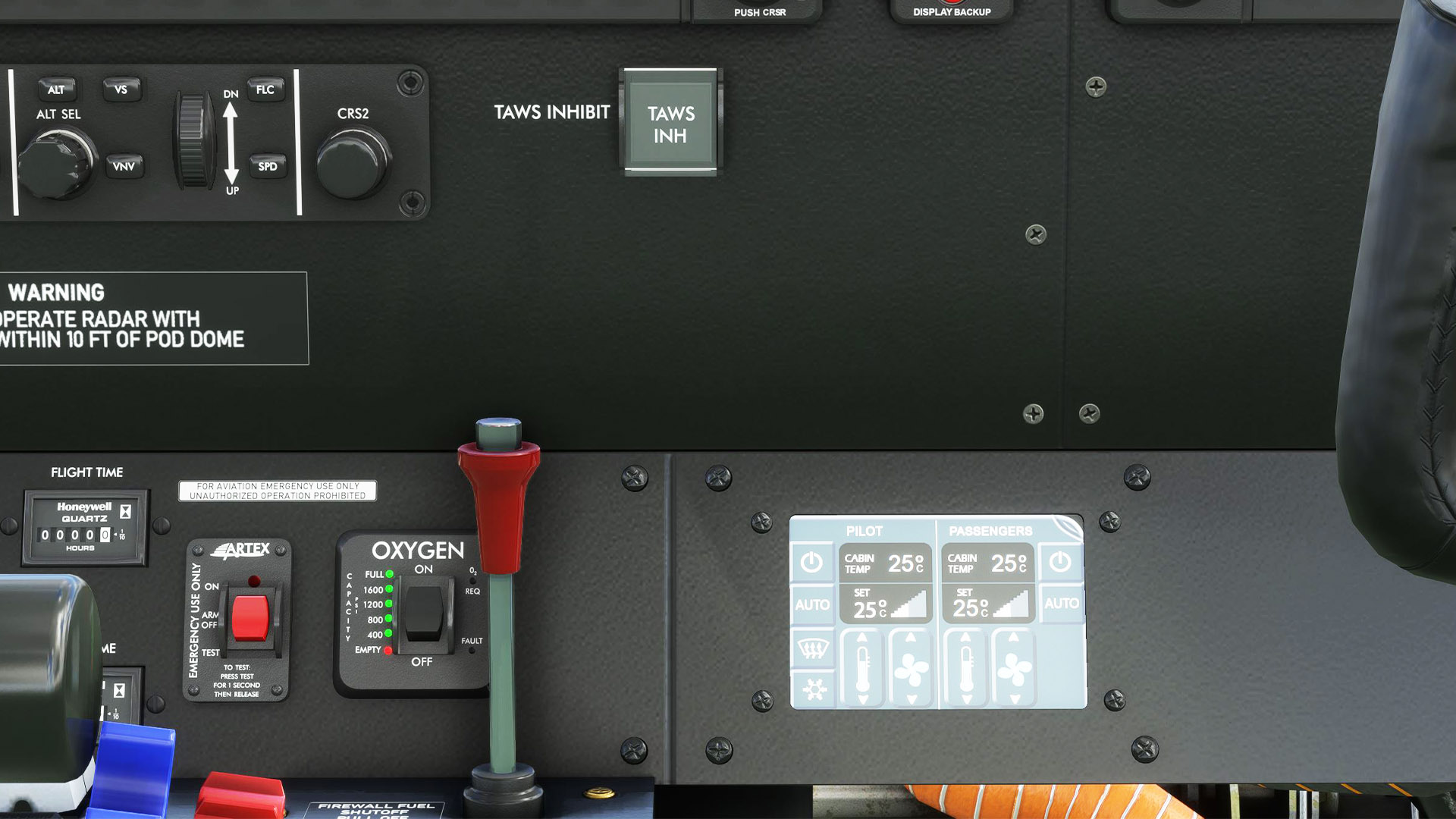
The Kodiak 100, despite its flight ceiling of 25,000 feet, is not pressurised. However, it is equipped with an oxygen supply system to counteract the hypoxia associated with high altitudes.
It is also equipped with an air-conditioning system with differentiated settings between the cockpit and the cabin.
Pilots screens
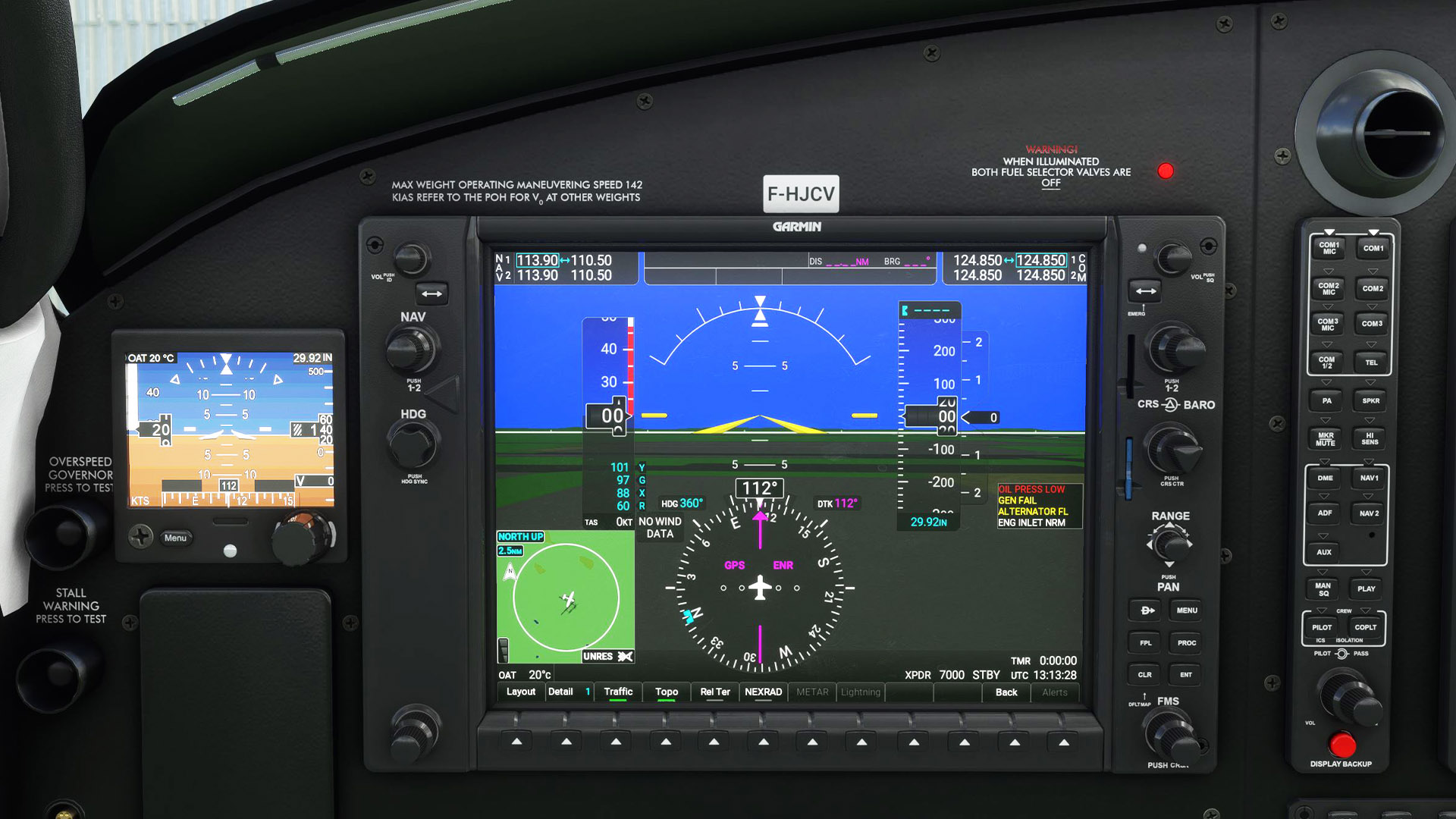
As mentioned above, the Kodiak 100 is equipped with the Garmin 1.000 NXi system, consisting of three screens. Two screens, positioned in front of the pilot and co-pilot, give the information needed to fly the aircraft. The engine parameters are also displayed when the central screen is switched off. The presentation is very pleasant and efficient, and all the information is easily identifiable and readable. It also allows many choices of presentation, depending on the pilot’s wishes. This is also where the transponder is operated.
To the right of the screen are the controls for the radios.
To the left of the screen, there is the emergency equipment, informing the pilot of all the parameters he needs (artificial horizon, speed, altitude, heading, etc.).
Navigation screen
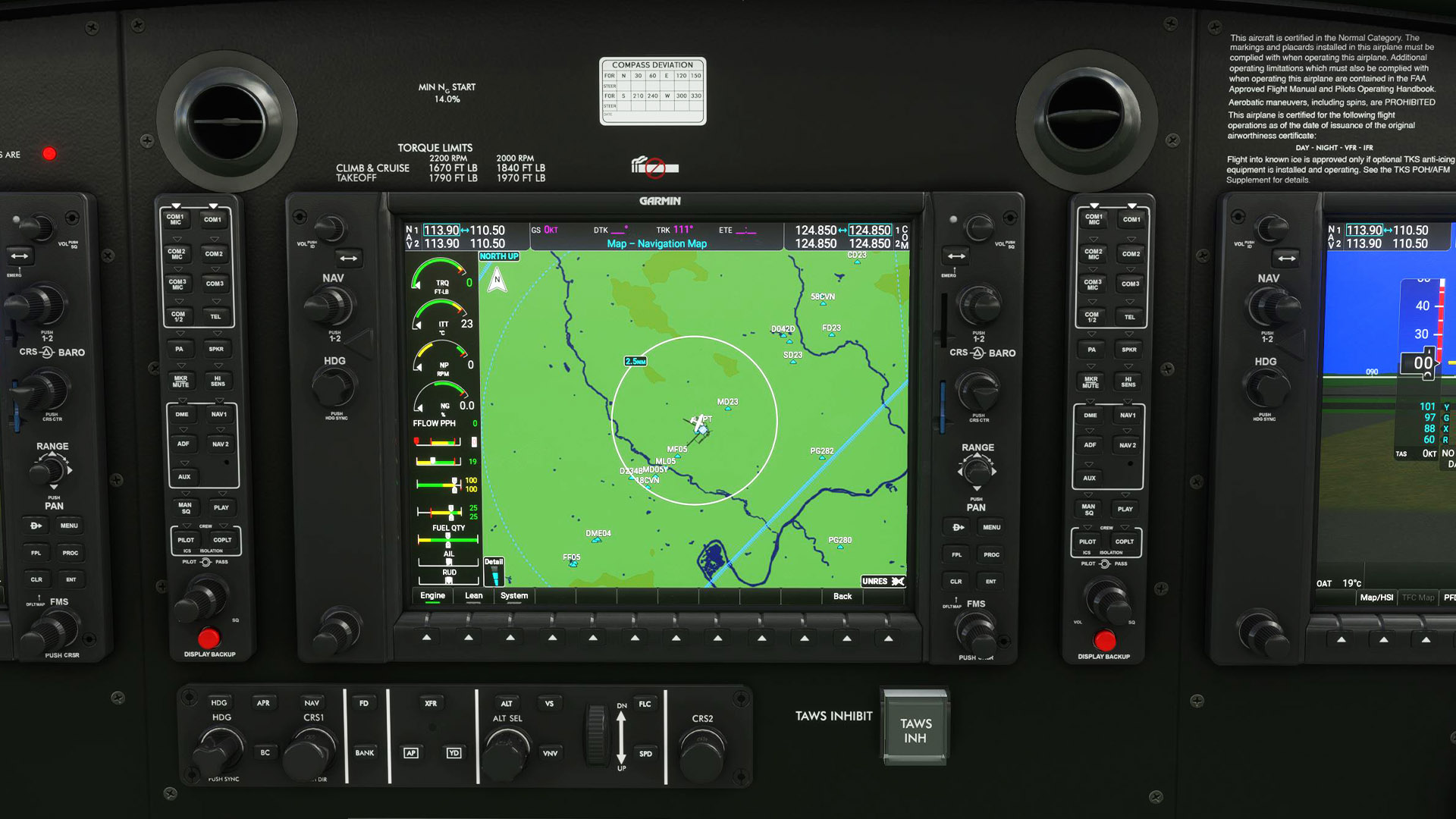
Finally, in the center of the dashboard, there is a third screen used mainly for navigation functions. It should be noted that it is equipped with a TCAS. This is also where the engine parameters and status information are accessed.
Below this screen are the buttons and knobs for the autopilot, which offers all the functionality you would expect from this kind of aircraft.
That’s it, we’ve covered the functions of the Kodiak 100.
We can now move on to the next phase : learning the procedures.

